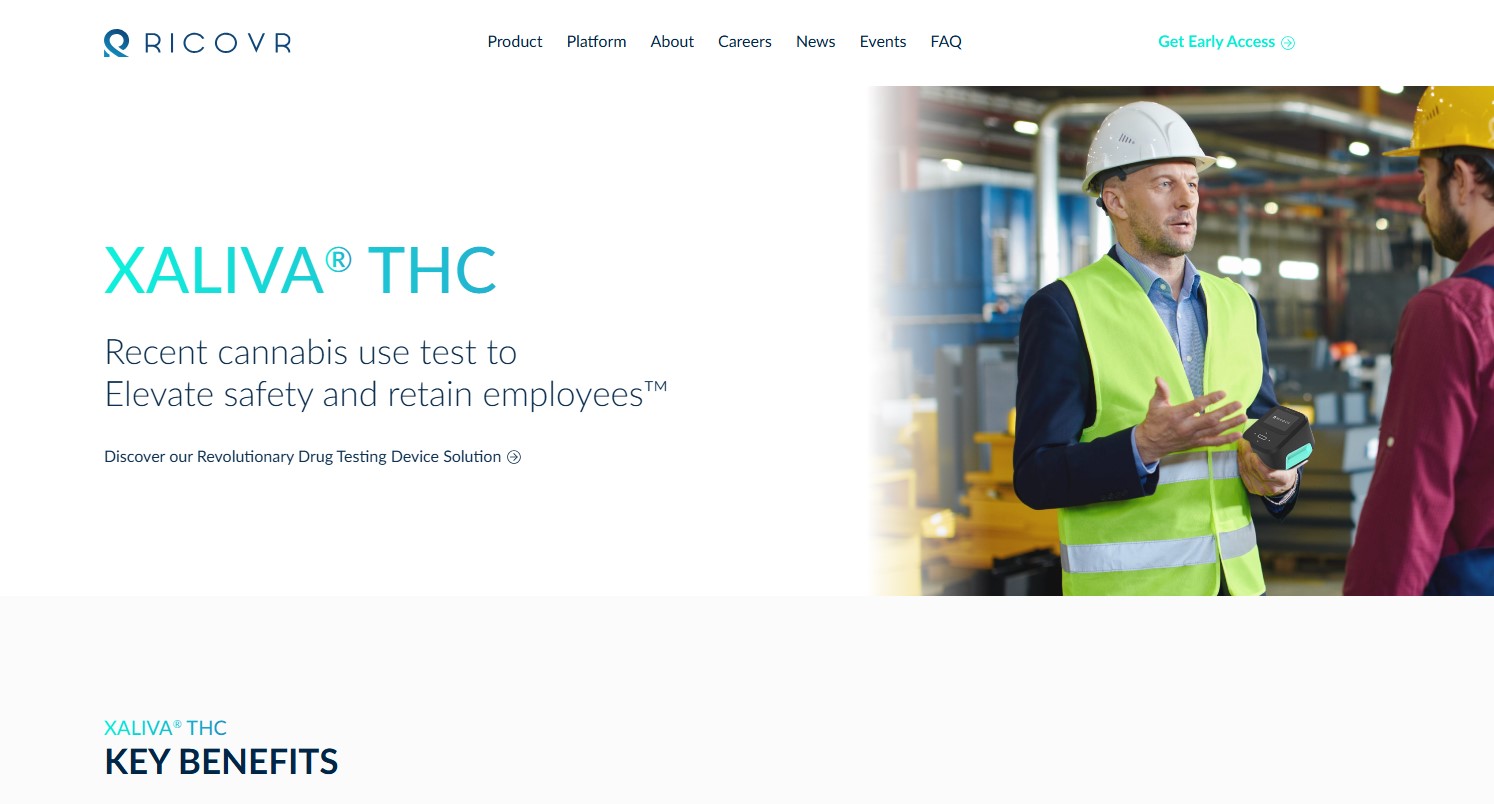Cannabis legalization requires a new approach to maintain safe workplaces

Detecting cannabis (THC) used within the workday is the best method to provide fairness to employees who use responsibly on their own time and to maintain safe workplaces
When cannabis was used, not if it was used, matters for workplace safety
Recent articles show that employees who use cannabis before or during work hours are often the most significant safety risk. This has been a rising concern, especially with many U.S. states decriminalizing and legalizing marijuana for medical and recreational use.
- 34% of employees report seeing fellow workers use cannabis during work hours, according to a National Safety Council study.
- Workplace impairment poses an inherent safety risk, and those who test positive for THC may have 55% more accidents, 85% more injuries, and 75% more absenteeism. (1,2)
Problems with existing cannabis test methods
Traditional drug test methods with urine and hair detect cannabis metabolites, indicating past use of up to 30 days or more. 90% of employers still use these test methods for workplace drug testing. Employee-rights groups have long argued those tests are discriminatory, penalizing people for using cannabis on their own time and away from the workplace. Employers are already experiencing retention issues and do not want to lose employees for what they do on their own time. It costs employers approximately one-third of a lost worker’s annual earnings to recruit and train a new worker. (3,4)
Is breath testing better?
Breath testing or cannabis breathalyzers only provide up to a 3-hour length of detection for THC. Depending on multiple factors, the impairment window can be at least 8 to 10+ hours. Therefore, this 3-hour window is far too short in a real-world application and can potentially miss several hours of impairment.
In addition, the detection windows claimed by the breathalyzer companies don’t account for timing and sample collection complications in the real world, increasing the relevant detection window. (5,6)
Lastly, breath testing or cannabis breathalyzers may not be able to detect edibles. No academic research to date shows that breath testing can effectively detect THC consumed in an edible product. Breath testing could lead to adverse safety outcomes if implemented in workplaces, as edibles are the fastest-growing method of cannabis consumption in the U.S.
Saliva testing is the solution for employers.s
For an employer who wants to maintain a drug-free workplace, the most important questions are “When did the employee last use THC?” followed by “How do I test that?” Cannabis (THC) use causes impairment for 3-to-10 hours after use, according to the most comprehensive impairment study review from Neuroscience & Behavior Reviews.
As an employer, you should structure your drug testing policy to account for the full window of impairment to create a fair and safe work environment for all of your employees throughout the day. This policy requires accurate, easy-to-collect, rapid, point-of-care technology that can detect recent cannabis (THC) use over the entire window of impairment: saliva testing can check all of these boxes.
Saliva testing can detect recent cannabis use within the past 12 hours or less, depending on the THC cut-off level. This provides the optimal detection length to provide fairness to responsible cannabis users and maintain workplace safety. It is the only test method with a window of detection that begins after use and lasts for the entire THC window of impairment or workday. (7)
- https://www.nsc.org/getmedia/d00188d1-97c1-4898-a176-33561270a8fc/survey.pdf
- https://www.shrm.org/hr-today/news/hr-magazine/fall2019/pages/marijuana-and-the-workplace-its-complicated.aspx
- https://www.shrm.org/hr-today/news/all-things-work/pages/to-have-and-to-hold.aspx
- https://academic.oup.com/clinchem/article/59/12/1780/5622101?login=false
- https://www.sciencedirect.com/science/article/pii/S0149763421000178
- https://link.springer.com/article/10.1007/s00216-013-7159-8



